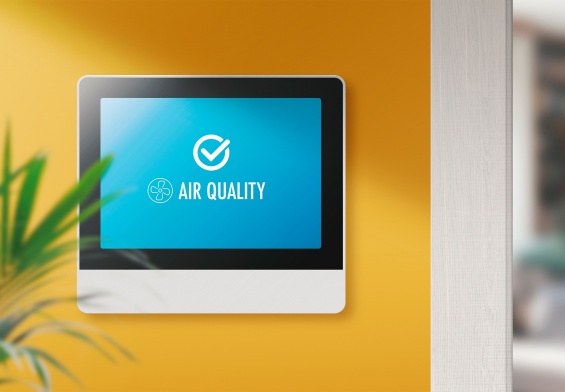Mold can be a devastating health hazard if it’s not dealt with, and that’s terrifying because it’s an issue faced by so many homeowners. In places where humidity levels and weather conditions vary, like Morris County, NJ, homeowners are especially vulnerable to mold growth via moisture buildup. Therefore, mold inspections are important for your home’s structural health and the well-being of yourself and your family. This article will discuss some of the most common areas for mold growth in homes, why these areas are prone to mold, and how a mold inspection in Morris County can help.
The Dangers of Mold
Mold produces spores that can lead to serious health problems when they go airborne. Exposure can lead to symptoms like nasal and sinus congestion, eye irritation, coughing, headaches, and even skin rashes. People with asthma, allergies, or compromised immune systems are more vulnerable to these effects, so mold poses serious health risks in any home. Routine mold inspections are a reliable way to defend against these risks, maintaining a safe environment.
Common Mold Hotspots in Your Home
In homes across Morris County, mold can grow wherever there’s moisture. Here’s a closer look at some of the most frequent hotspots and how you can keep them free of mold.
Basements
Basements are a prime location for mold because they tend to be damp, poorly ventilated, and prone to leaks or flooding. Mold spores thrive in these dark, enclosed spaces, especially in areas where there isn’t much airflow. Water seepage from the foundation or leaks after a rainstorm can introduce mold that spreads quickly and silently. Over time, these conditions can lead to significant structural damage if the mold isn’t dealt with. To help prevent issues, you should check for cracks in foundation walls, keep air circulating, and use a dehumidifier to control moisture. Mold inspections can also detect hidden mold colonies that may affect your home’s air quality without the obvious signs.
Bathrooms
Bathrooms are another ideal environment for mold growth, because of their high humidity levels and frequent water exposure. Mold is often found on shower tiles, around sinks, and in grout lines, especially in areas where water tends to accumulate and dry slowly. Mold can also spread under flooring or behind walls if leaks go unnoticed, eventually causing long-term water damage. Using exhaust fans during showers reduces humidity significantly, while regular cleaning prevents visible mold buildup. An inspection can help identify hidden mold behind walls or under fixtures, which can contribute to unseen air quality concerns.
Kitchens
The kitchen is another high-risk area, with mold commonly found under sinks, around dishwashers, and near refrigerators. These appliances can develop leaks over time, creating conditions conducive to mold growth. Without enough ventilation, food particles and moisture combine to make the kitchen a prime target for mold spores. If you notice a musty smell or visible mold in cabinets or behind appliances, take action as soon as you can. Addressing leaks, keeping airflow steady, and regular cleaning can keep mold from taking over the most important part of your home.
Attics
Attics are often out of sight, so they’re usually overlooked, but they’re a common mold hotspot. Poor ventilation, roof leaks, and condensation frequently lead to moisture buildup that causes mold growth. Mold in the attic can go unnoticed until it spreads significantly, potentially impacting insulation, roof structure, and air quality throughout the home. If it’s not dealt with, mold can damage wooden beams, leading to expensive repairs. Regularly inspect your attic for signs of moisture, use a dehumidifier, and make sure the insulation is working. Since mold in attics often goes unnoticed, a professional inspection can be the best approach for early detection.
Behind Walls and Ceilings
Water pipes behind walls can leak or burst, allowing mold to grow undetected in hard-to-reach spaces. Over time, mold can spread within walls and ceilings, leading to discoloration, peeling paint, or a persistent musty odor. Mold in these hidden areas often goes unnoticed until it has caused substantial damage, which may require more invasive and expensive removal processes. You can reduce this risk by conducting routine plumbing checks and investigating any unusual smells or wall discoloration. It’s hard to detect mold in these hidden spaces without a mold inspection, and professional assessments can identify concealed colonies early on, before they get worse.
Laundry Rooms
Laundry rooms are prone to mold due to moisture from washing machines, leaky faucets, and lingering humidity. Mold commonly develops around washers, in washing machine seals, or even in the cabinetry. The warmth and moisture from laundry cycles create the ideal conditions for spores to settle and grow. Additionally, leaving wet laundry in the machine for extended periods is also conducive to mold growth. Clean the washer drum and seal regularly, and keep the room well-ventilated. These steps can help reduce mold in the laundry area, supporting a fresher, healthier home.
HVAC Systems and Ductwork
Mold can also develop in heating, ventilation, and air conditioning (HVAC) systems, especially if there’s a lot of moisture in the ducts. If there’s mold in your HVAC system or ducts, spores can spread throughout the entire home, impacting air quality and causing respiratory issues. It’s common for mold in HVAC systems can go unnoticed until it has noticeably affected air quality on a larger scale. Regular HVAC maintenance, like replacing filters and cleaning ducts, helps reduce the risk. When mold is in the HVAC systems, it’s critical to deal with it promptly to prevent further spread, making inspections a wise preventive measure.
Why Mold Inspections Matter
A mold inspection helps identify visible and hidden mold sources, giving you the information you need to take action. In Morris County, where seasonal humidity and rainfall can affect indoor air quality, routine mold inspections are particularly helpful. With a professional inspection, you’ll know where mold is growing, the severity of the problem, and the best methods for remediation.
Tips for Mold Prevention
While mold can be persistent, there are practical ways to lower the chances of it growing in your home:
- Control Humidity Levels: Use dehumidifiers, especially in basements and bathrooms, to keep indoor humidity below 60%.
- Repair Leaks Promptly: Address any plumbing or roof leaks as soon as possible to prevent moisture from seeping into walls and floors.
- Improve Ventilation: Use exhaust fans in bathrooms and kitchens, and make sure your attic and basement have adequate airflow.
- Clean Regularly: Regularly clean high-risk areas such as bathrooms, kitchens, and laundry rooms to prevent visible mold growth.
- Inspect Periodically: Watch for visible mold signs and schedule routine mold inspections to detect any hidden growth.
Take Action with a Mold Inspection in Morris County
If you’re concerned about mold in your Morris County home, a professional mold inspection can be the first step toward protecting your property and health. Mold isn’t just an aesthetic issue; it’s a health hazard that can impact everyone in your household. By identifying and addressing mold early, you can maintain a safe, comfortable living environment.
For homeowners in Morris County, taking steps toward mold control can be key. A mold inspection offers peace of mind, allowing you to address potential problems before they become severe.
Resources
https://www.hgtv.com/design/remodel/interior-remodel/common-areas-for-mold-growth
https://www.cnet.com/home/7-areas-likely-hiding-mold-in-your-home/
https://greenorchardgroup.com/how-to-check-for-mold-in-your-house-or-apartment/




